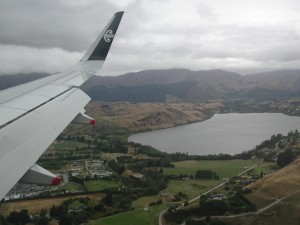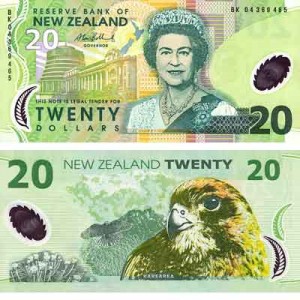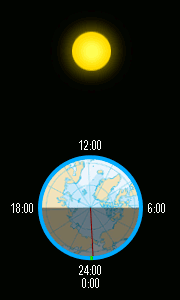Category Archives: New Zealand
Photo Albums
here are links to three facebook photo albums. anyone can view, registered users can comment. it’s been a busy week!
The Trip
I debated whether to take my cell phone on the trip. It turned out it was a good thing I had it. My friend Pam dropped me off at the Rochester Airport two hours ahead of the scheduled departure. That was as smoothly as things would go for a while. The United Airlines ticket counter agent looked into her system and said she couldn’t check me in. It was throwing a red flag because it thought i was double booked on one of the segments of the return trip. There had been half a dozen schedule changes and reticketings since I booked the trip through Air New Zealand in October, and somewhere along the line things had gotten out of sync between the two carriers. UA suggested I call ANZ to get them to fix it, so I did. The agent in Auckland told me that her system didn’t show any such double booking. A UA supervisor came over. The ANZ agent wanted to relay the current ticket number to UA, but the UA agents weren’t interested in that. The supervisor called someone on a telephone. The ANZ agent asked to speak to the UA agent. When i relayed that request, Three UA agents all gave me a look of startled disbelief, as if that were the most insane idea they had ever heard. Finally the UA supervisor asked me if i wanted him to delete the wrong booking. When I tried to get clarification of the situation the super said “I just need you to say yes, Sir”. “Yes it is, sir” i replied, satisfying an apparent a point of protocol in his training. They were now interested in the ticket number. The superfluous booking was deleted, and the problem was solved. We seemed to be on our way.
As the super was walking off, the original agent once again pecked on the keyboard and then said “you don’t have a seat on this flight”. I love the way they’re trained to frame it as if it were me who overbooked the flight and got caught. More pecking and peering into the CRT. Finally the printer whirred and I was presented with four boarding passes. I wondered what had happened to change things, but didn’t dare ask. Once again we seemed to be on our way.
On the way to the gate, I bought four magazines: The New Yorker, Harper’s, and two weeks of The Economist. I havn’t traveled by air in at least three years. Four magazines used to cost twenty bucks. It’s thirty now. The Economist alone lists for $8.99! I was to later find that the dinky five dollar bottle of wine on the plane is now a dinky nine dollar bottle of wine.
This is when the magnitude of the storm that was pounding the East Coast began to loom large. The board showed most of the flights from NYC and vicinity to be cancelled. The gate agent announced a one hour delay, soon revised to a two hour delay. I guessed that the aircraft for my flight had been scheduled to come from one of the cancelled flights to the East. The Type A road warriors began fuming and saying unkind things to the gate agents. I retreated to an area with tables and chairs to try the free wifi. When I pulled up the UA web flight status, it cheerfully announced that it was on time. A man with a large golden six pointed badge walked through with a large black dog on a leash. The dog was wearing an identical large gold badge hung from his collar. I wondered what Deputy Dog was sniffing for. Again i didn’t dare ask.
After about an hour, and no doubt some serious shuffling by the rerouting specialists, it was announced that a previously unscheduled flight from Chicago would arrive around noon, and we would board it when it arrrived. That happened pretty much as predicted, and the absence of deplaning passengers made it fairly certain that it had been sent to take the place of the one stuck in the East. We boarded about 12:45, about two and a half hours late. My four hour layover in Chicago miraculously transformed from a nuisance to a godsend.
Things went smoothly from there. The thirteen hour flight across the Pacific only took eleven and a half hours. I sat next to a Taiwanese couple that had lived in Denver for forty years. He was a retired civil engineer, specializing in waste water treatment. He liked his work, but hated the politics. Sounded familiar. They were going on a whirlwind tour of NZ, then on to Taiwan. They were experienced trans-Pacific travelers, and brought their slippers and their own food, which smelled pretty good. The food on ANZ wasn’t bad either.
Customs in Auckland was tedious. I think my bags were xrayed four times. Another dog sniffed me. They asked if I had been in a forest recently, and i said i lived in one. They wanted to look at the soles of my hiking shoes. It was partly sunny when the flight to Queenstown took off, but after half an hour in the air, the cloud cover blanket was horizon to horizon. Despite having my camera ready, I would not see the Southern Alps on the way in. I caught my first glimpse of the South Island as we descended below the ceiling on approach to Queenstown.
It was cold and windy on arrival. Bruce had taken a relative to the airport to board the same plane i just gotten off, and we saw each other for the first time in about ten years. The next day was sunny and warm.
Units of Measure
Modern life is characterized by numbers. We incorporate them into our intuitive relationship with our surroundings and don’t think much about them until we go to a place where the units are different.
New Zealand uses the New Zealand dollar, which converts today to 84c US.
Time
Some degree of global standardization exists with time. pretty much every place on earth agrees that there are twenty four hours in a day, we just don’t agree on what to call them. It’s conventional here to use modulo 12 counting and differentiate morning from afternoon by AM and PM. Most other places use modulo 24. It takes me a while to internalize that 17:00 is late in the day without first converting it to 5:00pm.
The international date line is just to the East of NZ so that Auckland is the first major city in the world to experience the new date. I found this animation interesting and useful.
note the sun at high noon on the rotating earth. the IDL is the red line, fixed on the earth and rotating with it. As usual the devil is in the details, but the graphic illustrates why the IDL is necessary.
Right now it is a little after 1PM Monday here, but it is 07:00 Tuesday NZDT. If we walk the time zones to the East from New York, the time advances (gets later) until we pass through midnight somewhere around India, and begin the new day, Tuesday. Continuing on Eastward, we finally arrive at NZ 18 hours from NY. If we walk the time zones to the West, the time becomes earlier until we reach NZ six hours earlier in the day (seven time zones plus DST). But when we cross the IDL from West to East, we advance the date, yielding the same result: 07:00 Tuesday.
On the way there, the flight from San Francisco departs at 7:45PM Monday and arrives in Auckland at 05:45 Wednesday. Wednesday? It so happens that this route crosses both midnight and the IDL from the East, advancing the date twice. So, how long is the flight, two days? No. It arrives in Auckland at 05:45 + 03:00 = 8:45AM San Francisco time for a difference of 13 hours. Isn’t global navigation fun?
Temperature
Most countries use the metric Centigrade unit, while the USA still officially uses Farenheit, along with the other holdouts Jamaica, the Cayman Islands, Belize, the Bahamas, and Palau. It takes me a while to ‘think’ in Centigrade, so I cheat. My crutch: 10degC is jacket weather, 20degC is comfortable, and 30degC is very warm, New Yorkers might even say hot. That’s about all the range I’ll need in NZ.
Distance
A Kilometer is a little less than two thirds of a mile, so for a while I’ll be computing that in my head, too.
Speed
Thankfully, we all agree on the hour as the unit of time, so km/hr is converted to mph by the same factor as distance. 60mph is about 100km/hr.
Volume
No gallons of gasoline in NZ, instead liters of petrol. A liter is a little larger than a quart, so i generally use a factor of four to convert in my head, and then round down if figuring liters to partially compensate for the five percent error. This is handy when purchasing petrol by the liter.
Gas Mileage
The best is saved for last. Fuel economy is measured in NZ as liters per hundred kilometers. Not only are all the component units different, but the ratio is inverted, meaning those of us used to a larger number of mpg being better have to struggle with a smaller number of l/100km being better. 30mpg is about 8l/100km, 40mpg is about 6l/100km.
Summary
Life hasn’t always been so quantitative. The sixty minute hour has only been around since the invention of the mechanical clock displaying minutes near the end of the 16th century. It is unknown how 60 came to be chosen as the number of minutes in an hour and seconds in a minute. Here’s a good article on that.
In fact it is the development of quantification during the Renaissance that enabled Western Europe to dominate the world by being among the first, if not the first, to invent mechanical clocks, geometrically precise maps, double-entry bookkeeping, precise algebraic and musical notations, and perspective painting. If you have any interest in that, I highly recommend The Measure of Reality by Alfred Crosby. I found it fascinating.


